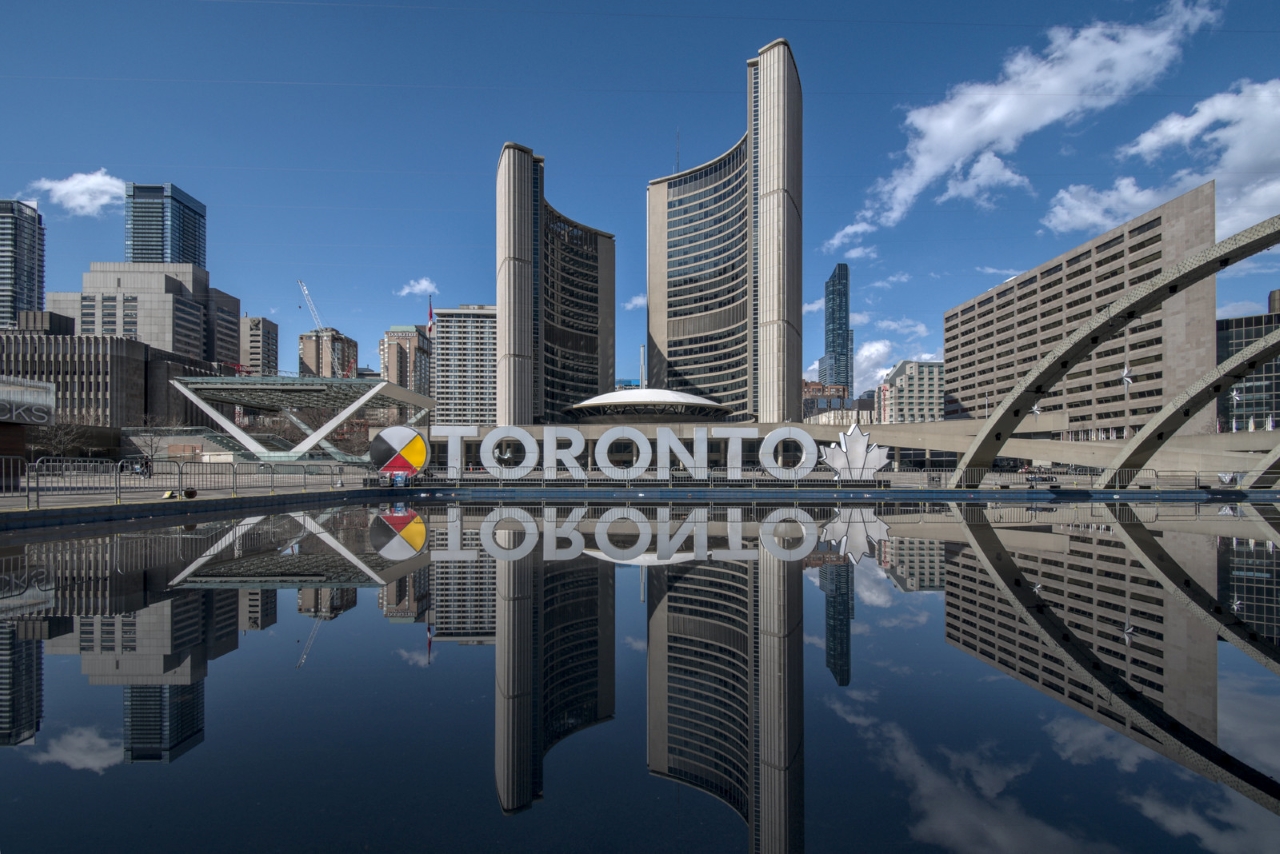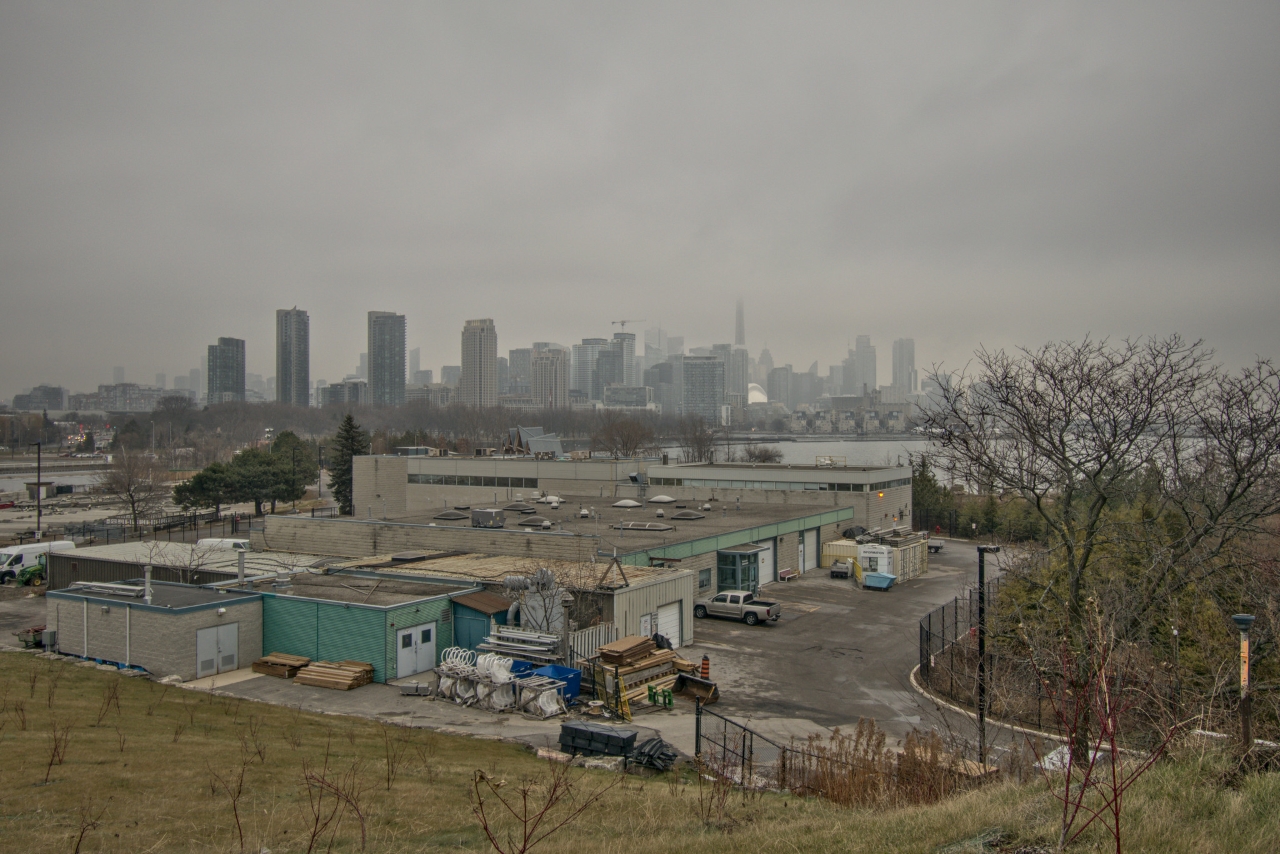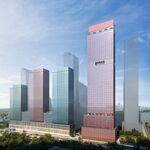The Canadian Urban Institute, an applied research and urban policy organization established in 1990, is using the downtime from the COVID-19 pandemic to digitally host a series of candid conversations with city builders. Their recent 'Cities in the Time of COVID-19' webinar asks how municipalities can respond to and manage two crises: COVID-19 and climate change. While the threat of climate change has been forecast for years, with cities creating their own resilience plans and policies to mitigate the impacts, COVID-19 has left municipalities struggling as potential long-term financial and socioeconomic effects begin to come to light.
 Nathan Phillips Square, image by Marc Mitanis
Nathan Phillips Square, image by Marc Mitanis
The conversation was moderated by Canadian Urban Institute President and CEO Mary W. Rowe, who likened COVID-19 to a particle accelerator sparking "the beginning of a conversation." Cities the world over are making resilience plans to resist, recover from, and adapt to adverse shocks and stresses. COVID-19 is putting those plans to the test. To begin the conversation, Rowe asked the panelists—from a variety of disciplines—what the response to the pandemic has looked like so far from their field of work.
Jeff Hebert, Partner of real estate and economic development consulting firm HR&A Advisors, worked with Rowe in New Orleans following Hurricane Katrina. He explained how the pandemic is a different crisis than what cities are used to handling. "This is a much different protracted emergency response. It's not a shock like a hurricane. Shocks expose preexisting terrible conditions, particularly for vulnerable and minority populations."
As cities move from the response phase to the stabilization and adaptive recovery phases, Hebert noted an opportunity to shift from the urban and societal conditions existing before to a "not business-as-usual" approach that will address inequities. Warning of "compounding shocks," Hebert also predicted that emergency management systems and resources in the United States will be stretched further in the summer, when the hurricane and wildfire seasons peak.
Allison Ashcroft is the Managing Director of Canadian Urban Sustainability Practitioners (CUSP). The CUSP network, launched in spring 2015, connects sustainability practitioners from 17 Canadian cities to expand and support their reach. Ashcroft says the response to COVID-19 so far has been local, and the recovery needs to be as well. Pointing out that cities have recently taken the lead on climate action, Ashcroft worries that with municipal finances taking a big hit, resources will be taken away from climate change initiatives.
Director of Climate Change for WSP, Elliott Cappell has been working with Canadian cities on climate resilience. He says despite COVID-19 big-picture climate projects are still moving and the ambition is still there, citing Kingston's Climate Leadership Plan as a prototype for climate action. He agrees that some resilience work is being pulled into the emergency response for COVID-19.
 Toronto skyline from Ontario Place, image by Marc Mitanis
Toronto skyline from Ontario Place, image by Marc Mitanis
Laurian Farrell, Director of North America/Environmental Risk Management at the Global Resilient Cities Network, says cities are facing "an existential threat to maintain themselves as an entity" in the wake of COVID-19. The "crippling loss of revenue" afflicting municipal budgets is forcing some cities to consider drastic steps. Cape Town is on the brink of declaring bankruptcy and Washington D.C. is "concerned about keeping the lights on in the coming weeks."
Farrell says that cities are rethinking and reframing their resilience plans to adapt to the COVID-19 world. Sending vulnerable populations to cooling centres during a heat wave, for example, may not be possible if physical distancing measures remain in place over the summer. Farrell warns against taking shortcuts when government funding and stimulus packages come down the pipeline, recommending that municipalities optimize every dollar. "COVID-19 has shone a spotlight on existing problems and laid bare the cracks in the system," said Farrell. "We need to have a resilient recovery to stop the cracks from widening."
Rowe suggests that while pandemic planning has been a staple in many resilience strategies, they largely didn't anticipate physical distancing measures and its ensuing impacts. Farrell says that in response, cities are already amending their plans to adapt to the crisis. "The ability to adapt quickly to a new shock or stress is what resilience is about."
Ashcroft submits that the COVID-19 landscape could be very different for Canadian municipalities like Toronto, which depend on property tax revenues to cover core services. Cities are already at capacity she says, and pressure to keep property taxes low amid the affordability crisis puts a cap on discretionary spending. Ashcroft predicts COVID-19 will force intergovernmental collaboration and broader conversations about a new model for funding cities and services.
 Lake Shore Boulevard, image by Marc Mitanis
Lake Shore Boulevard, image by Marc Mitanis
Cappell echoed the comments and predicts municipalities will be bailed out by their provincial and federal counterparts. He anticipates infrastructure stimulus will ensure capital projects keep moving, and resilience assessments will be done on all federal funded projects. Cappell points to Infrastructure Canada's Climate Lens as a paradigm. The guiding document developed in 2018 informs decision-makers about the climate change risks of large infrastructure projects in Canada.
There is an opportunity to seize the moment and "define the new normal" according to Farrell, who compares the closing of vehicle lanes for pedestrians and other changes to the public realm to a "global pilot study." As Italy begins to recover from the pandemic, some cities like Milan are hoping to prevent a resurgence in car use and air pollution by permanently converting public streets to bike lanes.
The collapse of oil, unaffordable housing in cities, and the potential for negative reactions to high-density environments following the pandemic could ignite a flight to the suburbs, which Ashcroft says underscores the important of providing equitable and affordable services in cities.
Programs to reduce greenhouse gas emissions should go to cities where the majority of emitters are, says Ashcroft. Cappell agreed and highlighted tower renewal programs as an effective opportunity to reduce emissions from buildings, one of the largest sources of greenhouse gases. Farrell says while the government can solve some problems, people need to take individual action at home to mitigate climate change. The lower pollution levels stemming from COVID-19 lockdowns could change mindsets and entice people to take steps to reduce their carbon footprint. Many will change their behaviour, Farrell says, but many won't. Cities will respond in different ways too. "Some will revert to their comfort zones. Cities are embedded in old decisions which is why we have equity issues."
The full discussion is available on the Canadian Urban Institute YouTube page. Recent discussions related to COVID-19, which can also be watched online, include: What are the Impacts on Local Economies?, How Will Public Engagement and Participation Processes Change? and What are the Impacts on Urban Design and Architecture?
* * *
UrbanToronto has a new way you can track projects through the planning process on a daily basis. Sign up for a free trial of our New Development Insider here.

 2.9K
2.9K 









































